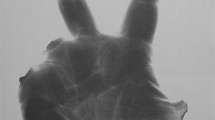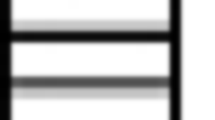Abstract
My purpose here is to describe a type of argument characterized by the fact that one of its premises is a directive—i.e. what is expressed by a directive sentence: a general instruction how to proceed or act. This directive premise brings an ostensive mechanism for the inclusion of visual or multimodal elements in an argument. If an argument is an invitation to inference (Robert Pinto), by using such a directive utterance the addresser is inviting the addressee to make an inference from an image, not from a proposition. Hence I will call them arguments from ostension or from deixis.
Similar content being viewed by others
Notes
“That which determines us, from given premisses, to draw one inference rather than another, is some habit of mind, whether it be constitutional or acquired” (Peirce 1960, 227).
The view that arguments are invitations to inference, rather than representations of inferences, makes acts of arguing on the whole directive in nature, rather than assertive. Directives are “attempts […] by the speaker to get the hearer to do something. They may be very modest ‘attempts’ as when I invite you to do it or suggest that you do it, or they may be very fierce attempts like when I insist that you do it” (Searle 1976, 11).
Curiously, some versions of Walton’s classic example of argument from sign apparently make the same mistake: “Travis and Lisa are walking along a hiking trail in Jasper National Park and they see some imprints on the trail. Travis examines them closely and says he recognizes them as bear tracks, saying. “A bear has been here.” Lisa replies, “How do you know those imprints are bear tracks? They don’t look big enough to be bear tracks.” Travis replies, “They are the tracks of a small bear. In fact, they are the tracks of a small grizzly bear, as we can see by these very long claw imprints” (Walton 2006b, 112–13).
According to a widespread definition (normative) reasons are “considerations that count in favor of doing or feeling or thinking this or that” (Lord and Maguire 2016, 4).
In fact since “the class of directive illocutionary acts includes acts of ordering, commanding, requesting, pleading, begging, praying, entreating, instructing, forbidding, and others” (Searle 1985 [1975], 185, fn.1), a more general term should be used here.
Eugen Popa (2015) calls for a revision of the role of directives in argument. More specifically, Popa is interested in a subtype of directives typically performed using “Let’s…”, what he calls “proposals”. Moreover he also distinguishes the speech act of proposal from its content, which he calls “supposition”. But Popa’s declared purpose is to explain the use of suppositions in argument assuming that every argument is made up of assertives; hence, his position is quite opposite to mine.
References
Bach, K., and R. Harnish. 1979. Linguistic communication and speech acts. Cambridge, MA: MIT Press.
Barceló, A. 2012. Words and images in argumentation. Argumentation 26: 355–368.
Blair, J.A., ed. 2012 [2004]. The rhetoric of visual arguments. In Groundwork in the theory of argumentation, 261–280. Dordrecht, Heidelberg, London, New York: Springer.
Bermejo-Luque, L. 2011. Giving reasons. Dordrecht: Springer.
Coliva, A. 2016. The varieties of self-knowledge. London: Palgrave-McMillan.
Dove, I. 2012. On images as evidence and arguments. In Topical themes in argumentation theory, ed. F.H. van Eemeren, and B. Garssen, 223–238. Amsterdam: Springer.
Frápolli, M.J. 2011. Enunciado. In Compendio de lógica, argumentación y retórica, ed. L. Vega, and P. Olmos, 228–231. Madrid: Trotta.
Goddu, G.C. 2011. Is ‘argument’ subject to the product/process ambiguity? Informal Logic 31 (2): 75–88.
Grice, H. P. 1985 [1969]. Utterer’s meaning and intentions. In The philosophy of language, ed. A. P. Martinich, 84–100. New York: Oxford University Press.
Groarke, L. 1996. Logic, art and argument. Informal Logic 18: 105–129.
Groarke, L. 2009. Five theses on Toulmin and visual argument. In Pondering on problems of argumentation, ed. F.H. van Eemeren, and B. Garssen, 229–239. Amsterdam: Springer.
Groarke, L. 2015. Going multimodal: What is a mode of arguing and why does it matter? Argumentation 29: 133–155.
Hitchcock, D. 2007. Informal logic and the concept of argument. In Philosophy of logic, ed. D. Jaquette, 101–129. Amsterdam: Elsevier.
Johnson, R.H. 2000. Manifest rationality. Mahwah, NJ: Lawrence Erlbaum.
Lord, E., and B. Maguire (eds.). 2016. Weighing reasons. New York: Oxford University Press.
O’Keefe, D.J. 1977. Two concepts of argument. Journal of the American Forensic Association 3: 121–128.
Peirce, C.S. 1960. In Collected papers of Charles Saunders Peirce, ed. Ch. Hartshorne, and P. Weiss. Cambridge: Harvard University Press.
Pinto, R., ed. 2001. The relation of argument to inference. In Argument, inference and dialectic, 32–45. Dordrecht: Kluwer.
Pollock, J.L. 1995. Cognitive carpentry. Cambridge, MA: The MIT Press.
Popa, E. 2015. Argumentative moves in a thought experiment. Cogency 7 (1): 69–89.
Searle, J.R. 1976. A classification of illocutionary acts. Language in Society 5 (1): 1–23.
Searle, J. R. 1985 [1975]. Indirect speech acts. In The philosophy of language, ed. A. P. Martinich, 171–185. New York: Oxford University Press.
van Eemeren, F.H. 2010. Strategic maneuvering in argumentative discourse: Extending the pragma-dialectical theory of argumentation. Amsterdam/Philadelphia: John Benjamins.
van Eemeren, F.H., and R. Grootendorst. 1984. Speech acts in argumentative discussions. Dordrecht: Foris.
Walton, D.N. 1996. Argumentation schemes for presumptive reasoning. Mahwah, NJ: Lawrence Erlbaum.
Walton, D.N. 2006a. Argument from appearance: A new argumentation scheme. Logique et Analyse 195 (49): 319–340.
Walton, D.N. 2006b. Fundamentals of critical argumentation. New York: Cambridge University Press.
Walton, D.N., C. Reed, and F. Macagno. 2008. Argumentation schemes. New York: Cambridge University Press.
Wenzel, J. 2006 [1990]. Three perspectives on argument. Rhetoric, dialectic, logic. In Perspectives on argumentation: Essays in honor of Wayne Brockriede, eds. R. Trapp, & J. H. Schuetz, 9–26. New York: Idebate Press.
Wittgenstein, L. 1958. Philosophical investigations. Oxford: Basil Blackwell.
Acknowledgements
A previous version of this paper was presented at the 11th Ontario Society for the Study of Argumentation Conference in Windsor, May 2016, where I benefitted from comments by Ian Dove, Paula Olmos, Cristian Santibáñez and Paul Simard-Smith. This paper has also profited greatly from the comments and criticisms of two anonymous reviewers. I am therefore indebted to all of them. This work has been made possible by funds provided by the Spanish Ministry of Economy and Competitiveness through the Research Project FFI2014-53164-P, “The construction of argumentative agents in the practices of public discourse”.
Author information
Authors and Affiliations
Corresponding author
Rights and permissions
About this article
Cite this article
Marraud, H. Arguments from Ostension. Argumentation 32, 309–327 (2018). https://doi.org/10.1007/s10503-017-9435-9
Published:
Issue Date:
DOI: https://doi.org/10.1007/s10503-017-9435-9




